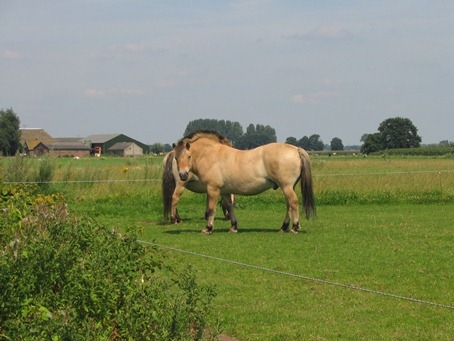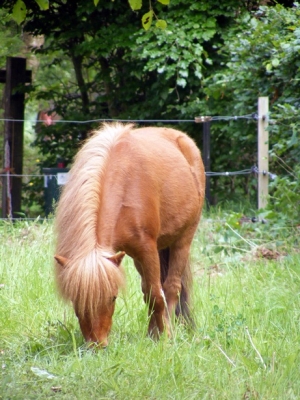|
Advice article filter
|
BeetNote Spring GrassSpring 2014: Prevent your horse from getting laminitis due to the spring grassFirst of all, why has spring grass such a bad reputation? In principle, it has to do with a period of rapid growth. In the autumn, grass stores carbohydrates for overwintering. These carbohydrates, mainly sucrose and fructans, are used during the early spring for growth and then replenished (via glucose and fructose) as the length of the days increase. Growth simply means building structural fibres: the grass stem. As a result, the protein value rises during the spring, drops during the summer, and rises again in the autumn. This is why, in the past, laminitis was thought to be caused by proteins. We know now that this is not the case. So, in the spring the grass is rich in protein, has a relatively low content of structural fibres and a high level of sugars and fructans. These proteins and sugars circulate within the grass and eventually concentrate at the base of the blades and stems. After a winter during which the horses were fed on hay or haylage of a second cut, or during which they were kept outdoors, grazing on decreasing amounts of grass with far lower levels of nutrition, all of sudden this rich source of protein and sugar is available. This happens at a time when a herd living in the wild needs it most. They have survived a period of existence feeding, finding just enough food to survive, and they need the rich grass to feed the new born foals, to build up body reserves and improve their body condition before the food availability decreases again. So for horses living in the wild, this fresh spring grass is essential to their survival. But why does the domestic horse have problems? If this is the case, why do horses respond in different ways? ately, a lot of research has been carried out into the physiological and microbial role in the gut and this has provided - to some extent - answers to these questions. The composition of grass is not the only cause of laminitis A rapid changeover from the winter diet to the spring diet puts a massive strain on the dynamics of the gastro-intestinal tract. The quantities and dominance of bacteria species change, causing the fermentation processes in the gut to change. And as a result, the acidity levels in the various parts of the gut change. All these parameters are dependent on the composition and nutrients value of the diet, as well as on the frequency of eating and the quantity that it is taken in. The more a horse eats, the greater the chance of it becoming fat. That much is clear. But this doesn’t explain why only some horses become laminitic. Various bacteriaIn 2012, a new research was published which showed that not all horses have the same bacteria in their gut. Horses prone to laminitis have a greater diversity of microbial types of bacteria in the hind-gut and at least two of these major groups of bacteria are present in much higher numbers in laminitic sensitive horses than in non-sensitive horses. It has also been shown that the rapid growth of some undesired bacteria types and the increase of toxins and lactic acid resulting from this, not only affect the laminae, but also trigger a response in the immune system as a result of which inflammation occurs. Despite all this, even in horses that look completely happy, a range of effects can occur. Even the most stable of bacteria populations will be affected to some extent by an overload of protein and fructans, but management can reduce this. Fortunately, the management is similar for all horses: Switch over with precaution and give the body (read: the microbe colonies) time to adjust. 1. Restrict the intake of grass
2. Feed between these periods an alternative roughage source. Pavo SpeediBeet supports the maintenance of the fermentation patterns, especially when you feed it prior to turning out your horse. A palatable sloppy mix, just before you bring your horse to the paddock, will make your horse feel full and he will not wolf down the grass in the first hours of grazing. 3. Reduce your winter diet and compose a summer diet along with the grass. In practice this means that you can often replace the starchy concentrate that you use during the winter to train and exercise your horse, by a low starch concentrate such as Pavo Nature’s Best. If your horse has no access to grazing, the above applies also when you start feeding a new batch of roughage. Pavo SpeediBeet is recommended by The Laminitis TrustPavo SpeediBeet does not contain starch and has a very low sugar content. This is why Pavo SpeediBeet is excellent feedstuff for horses and ponies which are prone to laminitis. We take pride that we have the approval of The Laminitis Trust. Dr Tom Shurlock  
|

